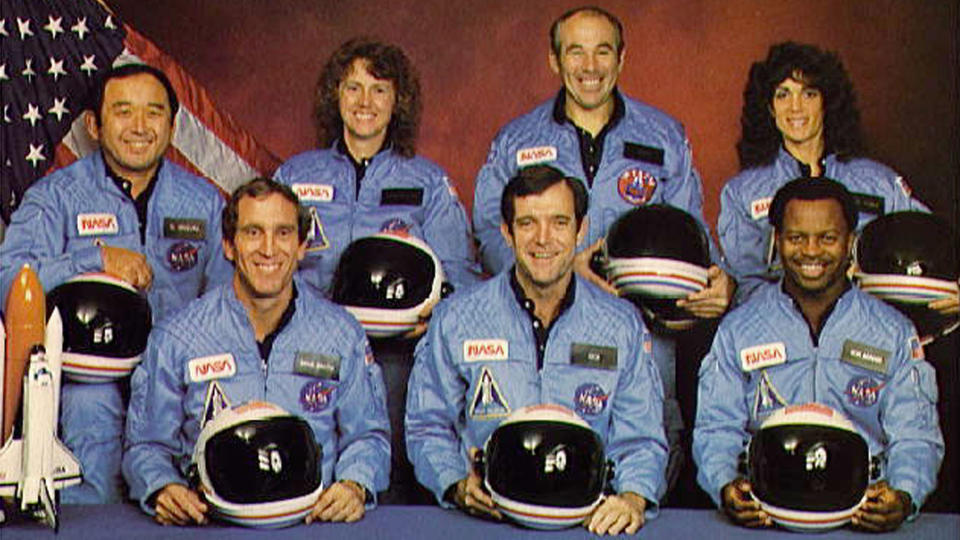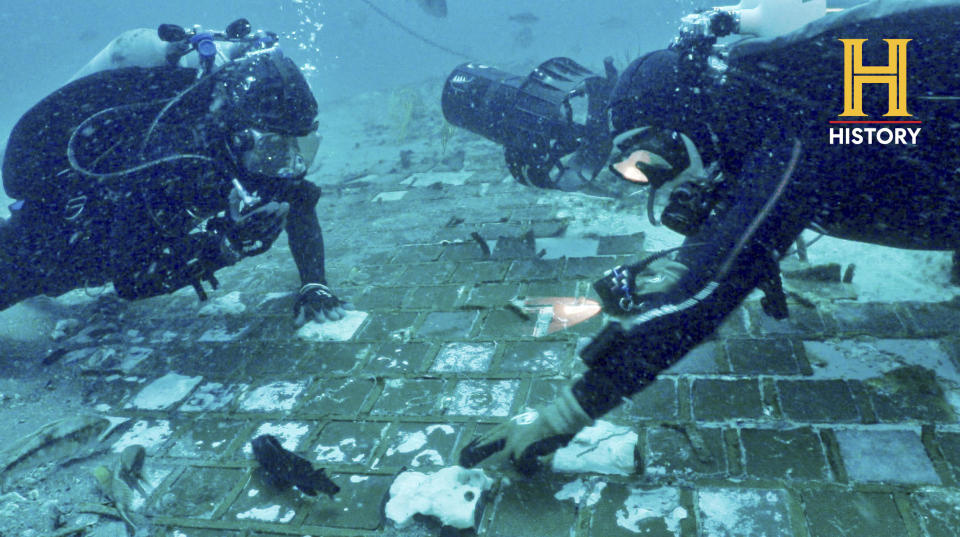Divers discover piece of the space shuttle Challenger in Atlantic Ocean
- Oops!Something went wrong.Please try again later.
NASA has confirmed that a piece of the space shuttle Challenger has been found in the Atlantic Ocean off the coast of Florida, nearly 37 years after the shuttle exploded shortly after liftoff.
The discovery was made by a History Channel documentary crew who were searching for the wreckage of a World War II-era aircraft, according to a press release from NASA. Divers noticed what was described as a "large humanmade object," partially covered with sand. Because of the "proximity to the Florida Space Coast" and the item's "modern construction and presence of 8-inch square tiles," the documentary team alerted NASA to their discovery.
The History Channel posted a video of the discovery on social media, calling it the "first discovery of wreckage from the 1986 Space Shuttle Challenger in more than 25 years."
What they uncover off the coast of Florida, outside of the Triangle, marks the first discovery of wreckage from the 1986 Space Shuttle Challenger in more than 25 years. Don’t miss the premiere of The Bermuda Triangle: Into Cursed Waters on Tuesday, November 22 at 10/9C. pic.twitter.com/LWUoFXxEnK
— HISTORY (@HISTORY) November 10, 2022
No further details were given about the piece that was found, but NASA administrator Bill Nelson said the discovery gives people around the world "an opportunity to pause once again" and think about the lives lost in the tragedy.
"While it has been nearly 37 years since seven daring and brave explorers lost their lives aboard Challenger, this tragedy will forever be seared in the collective memory of our country. For millions around the globe, myself included, Jan. 28, 1986, still feels like yesterday," Nelson said. "This discovery gives us an opportunity to pause once again, to uplift the legacies of the seven pioneers we lost, and to reflect on how this tragedy changed us."
The Challenger space shuttle exploded shortly after launch on Jan. 28, 1986. Seven people were aboard, including mission commander Francis R. "Dick" Scobee and pilot Michael J Smith. Mission specialists Ronald E. McNair, Ellison S. Onizuka and Judith A. Resnik, payload specialist Gregory B. Jarvis and teacher S. Christa McAuliffe were also part of the crew.

The major malfunction, which happened just 73 seconds after liftoff, was blamed on unexpectedly cold temperatures affecting the integrity of seals in the rocket booster.
By law, all space shuttle artifacts are property of the U.S. government. In the press release, NASA said the agency is still trying to determine what to do with the discovered piece. A priority of the agency is making sure that any actions taken "honor the legacy of Challenger's fallen astronauts and the families who loved them."
Previously, pieces of wreckage from the Challenger explosion have been displayed at the Kennedy Space Center. A 2015 exhibit, put together with the help of crew members' families and loved ones, focused primarily on the lives of the astronauts, but a piece of the shuttle's ruined fuselage was also placed on display.
In 2017, a soccer ball recovered from the wreckage of the explosion was flown to the International Space Station. The ball had been brought on board by mission specialist Onizuka, whose daughter was a soccer player, according to Shane Kimbrough, the ISS commander at the time.
This ball was on Challenger that fateful day. Flown by Ellison Onizuka for his daughter, a soccer player @Clear_LakeHS. #NASARemembers pic.twitter.com/grShwq372X
— Shane Kimbrough (@astro_kimbrough) February 3, 2017
"Challenger and her crew live on in the hearts and memories of both NASA and the nation," Kennedy Space Center Director Janet Petro said Thursday. "Today, as we turn our sights again toward the Moon and Mars, we see that the same love of exploration that drove the Challenger crew is still inspiring the astronauts of today's Artemis Generation, calling them to build on the legacy of knowledge and discovery for the benefit of all humanity."
That mission, which was NASA's 25th shuttle mission, was the last Challenger shuttle launched. NASA said that the loss of the Challenger and another shuttle, Columbia -- which also had seven astronauts on board when it broke up on reentry into the Earth's atmosphere in February 2003 -- "greatly influenced" NASA's safety culture and led to the foundation of new risk assessment procedures and the creation of an Office of Safety and Mission Assurance.
"At NASA, the core value of safety is – and must forever remain – our top priority, especially as our missions explore more of the cosmos than ever before," Nelson said in the press release.
The documentary showing the discovery of the Challenger artifact is scheduled to air on Tuesday, Nov. 22, according to NASA.

Texas federal judge blocks Biden’s student loan forgiveness plan
Warnock and Walker prepare for December runoff while control of Congress still undecided
Nicole slams Florida, leaving major damage along eastern coast as homes crash into ocean

